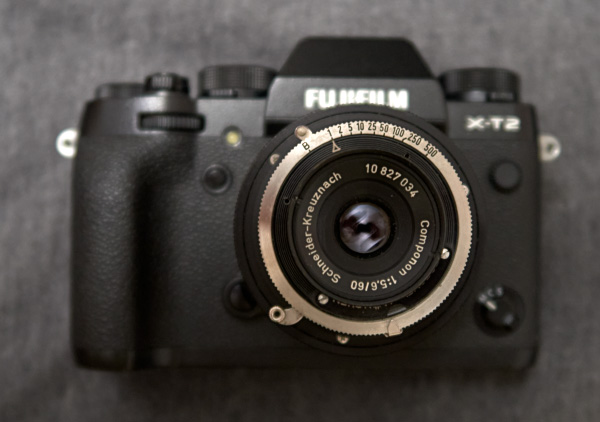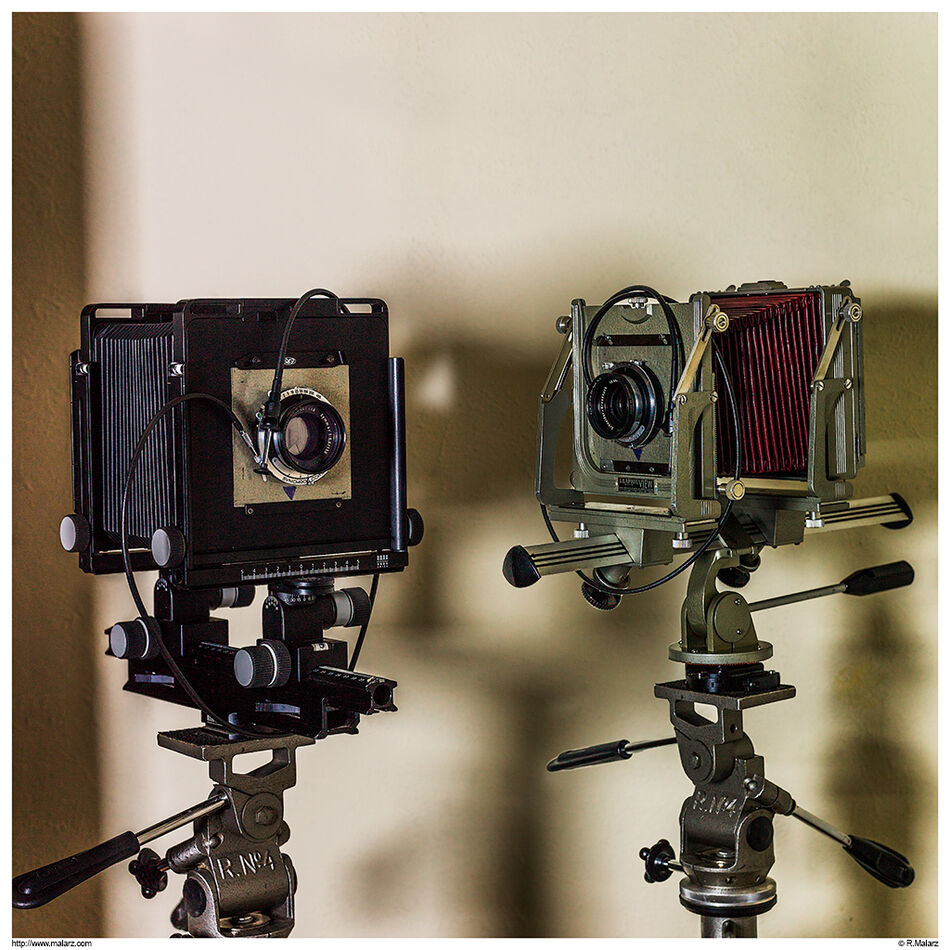Mirror or Mirrorless when shooting landscapes
May 4, 2023 11:48:16 #
For those landscape photographers who are dedicated to the genre, does it make a difference?
Just curious
---
Just curious
---
May 4, 2023 11:55:31 #
Bill_de wrote:
For those landscape photographers who are dedicated to the genre, does it make a difference?
Just curious
---
Just curious
---
No, it makes no difference if you know how to use your camera and lens correctly.
May 4, 2023 12:02:21 #
To me, it's more of a preference. I've been using mirrorless for landscapes since 1969. A few years ago, I added the Arca Swiss to my camera selections and have used that for a good portion of my landscape work. The Arca Swiss has been customized to accept the lensboards used on my Graphic II.
Yes, I do get quite a bit more detail and variable DOF using either of these mirrorless cameras.
--Bob
Yes, I do get quite a bit more detail and variable DOF using either of these mirrorless cameras.
--Bob
Bill_de wrote:
For those landscape photographers who are dedicated to the genre, does it make a difference?
Just curious
---
Just curious
---
May 4, 2023 12:04:26 #
When people look at an image from a mirrorless camera, they feel the difference not just in their eyes, but in the depth of their heart.
May 4, 2023 12:07:26 #
Maybe! I've never owned a DSLR, so I might be wrong.
I wanted to learn how to do long exposures in daylight. I bought 10 stop ND filter and watched a YouTube or two. With a DSLR the instructions were to compose and then add the filter. That was because the filter made the viewfinder so dark that you couldn't see the composition.
I was using an M4/3 camera which is mirrorless. The viewfinder didn't go dark! That's because with a mirrorless "calculates" an actual preview. You are not seeing through the lens. You are seeing what the processor sees through the lens!
In other words, with a mirrorless you can screw on ND filters then compose and click.
I wanted to learn how to do long exposures in daylight. I bought 10 stop ND filter and watched a YouTube or two. With a DSLR the instructions were to compose and then add the filter. That was because the filter made the viewfinder so dark that you couldn't see the composition.
I was using an M4/3 camera which is mirrorless. The viewfinder didn't go dark! That's because with a mirrorless "calculates" an actual preview. You are not seeing through the lens. You are seeing what the processor sees through the lens!
In other words, with a mirrorless you can screw on ND filters then compose and click.
May 4, 2023 12:17:59 #
Bill_de wrote:
For those landscape photographers who are dedicated to the genre, does it make a difference?
Just curious
---
Just curious
---
More than 50% of my photography (low estimate) is landscapes. I recently moved from a Canon 5DIV (fantastic camera) to the R5. For the most part, I don't really find any huge difference. I got good results from both cameras. One thing I do like about the R5 that sometimes is a plus, is the IBIS which, when used in conjunction with an RF lens, can yield sometimes 6-7 stops of IS. What does this mean? Well, if shooting in lower light conditions, I have a better chance to get a sharp image with lower ISO and lower shutter speed (hand held). But 99% of the time, there really isn't any notable difference.
May 4, 2023 12:28:37 #
May 4, 2023 12:31:53 #
Bill_de wrote:
For those landscape photographers who are dedicated to the genre, does it make a difference?
Just curious
---
Just curious
---
No
bwa
May 4, 2023 12:48:25 #
Bill_de wrote:
For those landscape photographers who are dedicated to the genre, does it make a difference?
Just curious
---
Just curious
---
Yes there is no mirror slap shock with mirrorless, but at anything other than a good handholdable shutter speed, you would be using a tripod anyway with the mirror locked up in your DSLR for long exposures.
Mirrorless with an EVF is my preference because you can see the effect of all your exposure settings, filters, etc. in the EVF , and see a histogram also in the EVF, BEFORE you take the photo vs using a DSLR, allowing you to make adjustments in real time BEFORE you take the photo.
Cheers
May 4, 2023 12:55:05 #
May 4, 2023 13:03:05 #
For Megapixel Maniacs: SLRs (except for Pentax) can deliver only their native pixel resolution cuz they dont have any sensor movement system but most EVF cameras can deliver triple digit megapixel counts, typically about 4x the native pixel count.
May 4, 2023 13:29:46 #
User ID wrote:
For Megapixel Maniacs: SLRs (except for Pentax) can deliver only their native pixel resolution cuz they dont have any sensor movement system but most EVF cameras can deliver triple digit megapixel counts, typically about 4x the native pixel count.
Yes pixel shift technology does allow shots with 4x the final pixel count with more resolution and detail. Different mirrorless cameras call this technology by different names .
Pixel shift mode takes a sequence of 4 shots between which the sensor is shifted by 1 pixel. These are subsequently merged into an image sporting 'improved detail and color resolution'.
So you need cameras that have IBIS so they have the mechanism for shifting the sensor. No DSLRs have IBIS for their in-camera sensors.
Cheers
May 4, 2023 13:34:19 #
Ysarex
Loc: St. Louis
Bill_de wrote:
For those landscape photographers who are dedicated to the genre, does it make a difference?
Just curious
---
Just curious
---
No show stopping or make/break differences, but smaller things that can add up.
A mirrorless camera can provide live-view pre-exposure aids in the EVF that you don't get from a DSLR. The EVF highlight clipping warnings in my mirrorless cameras allow me to expose with increased precision and more quickly -- I would really not want to give that up now that I've come to rely on it. That's how I determine all my exposures now.
Mirrorless cameras typically have a shorter sensor to flange distance making it possible to mount just about any lens on the camera. That matters to me because I have a lot of lenses and I can use them all with my various cameras. Just for hoots I mounted an old shutter-mounted enlarging lens on my X-T2 (pic below) -- worked great.
That shorter sensor to flange distance means lenses can be designed without regard to clearing the mirror and that means better wide angle lenses. Won't show in a landscape but in a cityscape it's nice to have a wide angle lens that's distortion free. I have that now with my mirrorless camera and it's not an option for a DSLR.
Down sides: battery life or rather lack thereof. Never leave the house without charged spare batteries. As good as the EVFs have gotten I'd still rather see what I'm photographing through an optical finder rather than look at an electronic interpretation. But as noted I wouldn't trade the EVF exposure aids to go back to an optical finder.

May 4, 2023 13:42:08 #
amfoto1
Loc: San Jose, Calif. USA
Bill_de wrote:
For those landscape photographers who are dedicated to the genre, does it make a difference?
Just curious
---
Just curious
---
I would say it makes minor difference...
There are some advantages to mirrorless... The electronic viewfinder that can provide a reasonably accurate preview, fewer moving parts to reduce risk of slight camera shake, potentially lighter weight if walking some distance carrying the gear.
But there can be advantages to DSLR too... Longer battery life, lower cost and greater selection of lenses, much larger used marketplace. On the other hand, many legacy lenses can be adapted for use on mirrorless.
And the majority of new models offering the latest and greatest sensors, processors, algorithms and such are mirrorless.
Just for example:
Canon R5 (2020)... 45MP, Digic X processor, autofocus array covers almost the entire image area and is able to work to -6EV to 20EV, ISO 100-51200 (expands to 50 and 102400), metering -3EV to 20EV, exposure compensation +/- 3 stops, articulated LCD Touch Screen (3.15", 2 million dot), dual memory slots (one CFExpress, one SD), LP-E6NH battery (320 shots)... 26 oz.
Canon 5DS-R (2015)... 50MP, dual Digic 6 processors, AF array approx. 1/3 of images area in a center oval and able to work -2EV to 18EV, ISO 100-6400 (expands to 50 & 12800), metering 2EV to 20EV, exposure compensation +/- 5 stops, fixed LCD (3.25", 1 million dot), dual memory slots (one CF, one SD), LP-E6N battery (700 shots).... 33 oz.
Both cameras have similar array of other features such as bracketing, electronic level, focus screen grid, ability to magnify preview on rear LCD, intervalometer, external connectivity... including things that are probably irrelevant to landscape or of low importance.... such as the R5's 12 frames/sec mechanical shutter and 20 fps electronic shutter versus the 5DS-R's 5 frames/sec.
May 4, 2023 13:42:51 #
Ysarex wrote:
No show stopping or make/break differences, but sm... (show quote)
I agree with almost all of what you say here.
Two things though, the bigger batteries now in mirrorless make the battery issue a moot point now. I can go all day in the field on a single battery, with battery power to spare. Yes of course I carry spare batteries ,and I use two in my detachable battery grip when I use the battery grip .
And the 9.44 million dot EVFs with up to 240 fps refresh rate in both my Sony A1 and Sony A7SIII, and also in the new Sony A7RV make any advantage of ANY OVF a moot point now, just a fact. I dont miss anything about my OVFs that I used professionally for decades.
Cheers and best to you.
If you want to reply, then register here. Registration is free and your account is created instantly, so you can post right away.







